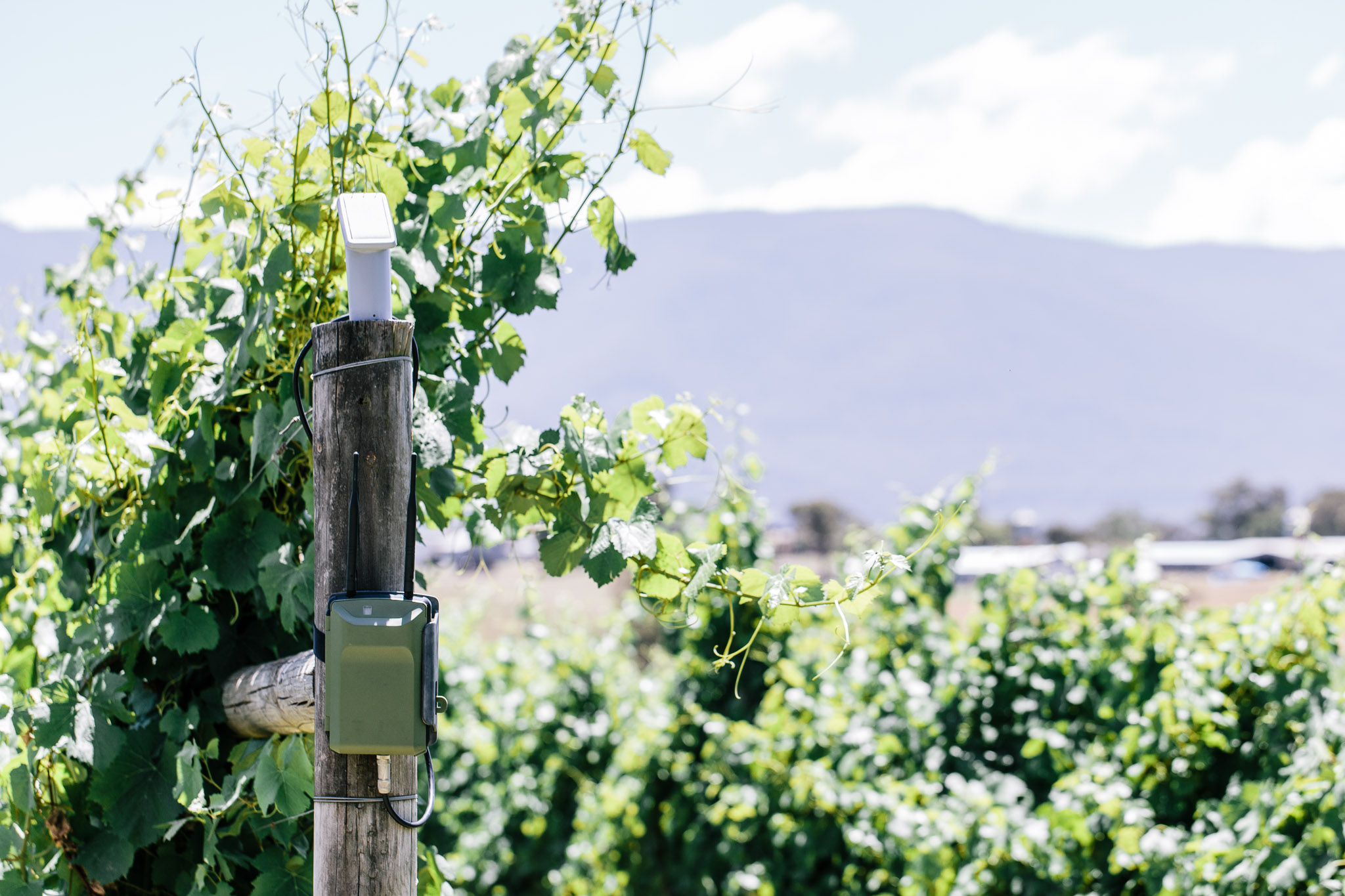
Building A Streamlined Approach to Sensor Data Retrieval in 2021

How your business can optimise its sensor data retrieval architecture for power and performance
As organisations become increasingly reliant on data for decision-making purposes, businesses are finding a need to leverage sensors and other data collection tools for a larger number of applications than ever before. While many of these sensors will continue to be connected to a permanent power supply and a wired backhaul network, this is not universal. Emerging industrial requirements are driving a need for low-power sensors that require less infrastructure, allowing them to operate in remote and challenging environments where traditional hard-wiring would be either impossible or excessively expensive.
A common element to all sensors – hard-wired and otherwise – is the need to be able to access captured data from a central cloud repository. As business needs develop, sensor manufacturers are under increased pressure to develop creative solutions that allow more flexible sensor installation without compromising on data quality or quantity, with many options now available. In a world where your business’ information has never been more vital, how do you ensure that you are able to quickly, cost-effectively and reliably retrieve data from a distributed network of sensors?
Understanding your requirements
Your business is unique – so are your technological needs. Just as with any technology, understanding what you’ll require from your sensors and the supporting infrastructure is key to selecting a solution that moves you towards your strategic goals.
Businesses have significant latitude in how they structure their sensor data retrieval pipeline, with a range of backhaul options and technologies available. A thorough discussion of all possible combinations is beyond the scope of this article – especially as your infrastructure will need to reflect your chosen application and respond to external constraints. Instead, we’ve identified six key factors that will influence the range of options available to you. Keeping the following top of mind when designing the sensor solution will go a long way to ensuring that your system is fit for use and fit for purpose.
Sensor location
The first and most illuminating question is: where will the sensors be deployed? A data retrieval interface for a monitoring system on a remote Australian mining operation will look vastly different to an interface for an automotive production line in urban Japan. Putting aside questions of deployment cost and difficulty – how are you going to get the sensors in place initially? – sensor location will also affect your costs by determining how much pre-existing infrastructure you’re able to make use of.
In those cases where sensors must by nature of their application be deployed in remote areas, there may be very little if any significant communication network infrastructure present. Unless it is acceptable for such a solution to operate simply as a local data logger, the solution selected for data retrieval may require the establishment of local infrastructure of some form. This will come with associated costs.
Data retrieval intervals
Secondly, how often will the data need to be accessed? A sensor that needs to be broadcasting in real-time will require much more robust infrastructure support than one only required to store and forward at regular intervals, or simply log data locally. Any system that requires an ‘always on’ connection has significant implications for power consumption and often has a need for the design to be hardened against outside factors such as weather or power outages that could affect your system’s ability to operate. If real-time data is not required, a far-greater number of options are available, allowing the sensor to store and forward required data after an event that would otherwise interrupt service.
Power constraints
While previously the majority of sensor systems were connected to a permanent power supply, many such systems are now run entirely from batteries, especially where they operate in remote areas beyond the reach of your existing infrastructure. Typically, such battery powered systems must be carefully designed to optimise use of the available power and ensure desired operational lifetime is achieved. It is important to note that these considerations must also extend to the selection of any communication technology used to retrieve the data and the way in which this technology is used to avoid over-taxing the system. Note that power constraints do not necessarily imply that only low power/low data volume technologies are feasible, since there may be cases where a higher power and high throughput technology allows a sufficiently low duty cycle to deliver lower overall energy usage.
Data volume
The volume of data that is generated by the sensor system will have a significant bearing on what communication options are viable. While low data rate networks may be fine for low complexity sensors, if a sensor produces a large volume of complex data a high bandwidth network solution must be found. This will in turn affect what infrastructure is required as some wireless solutions may not offer the throughput required by particularly demanding and data-rich applications.
Sensor density/proximity
How closely are your sensors clustered? Where a large number of sensors are required to operate in close proximity to each other – such as on an oil rig or a cargo ship – there may exist opportunities to streamline data retrieval by having all sensors accessed via a central gateway. A central gateway can reduce the complexity of both data forwarding and retrieval, requiring only a single interface to be accessed by an end-user to view data from multiple sensors, while also decreasing server load by allowing all data to be collected and forward in a single transmission.
Strategic/operational importance of data retrieved
Finally, how valuable is the collected data to you? The importance of the data collected can be a major determinant of your cost sensitivity regarding any retrieval system. For example, low priority or time-insensitive data may not need a high-bandwidth, multiply-redundant retrieval system as a delay of a few hours for maintenance or weather may not have a significant adverse impact on your company.
Conversely, and assuming there are no other constraints, if the value of the data is very high, additional cost to maximise bandwidth, uptime and availability may be justified. Closely related to this are those cases where the data is sensitive in nature (e.g. medical technology applications and personal financial data). Similarly, in these cases, there is often a need to invest development effort and expense in securing the data, extending to the selection of an appropriate communications technology for data retrieval.
Building a suitable backhaul
In light of the above considerations, it’s time to turn towards the practical question of what technology options are available. Different applications, budgets and industries call for different technology mixes, and the below is only a high-level overview of some of the most prominent options for commercial data retrieval applications.
Wired Communications Networks
The gold standard in connectivity, wired networks should be the first choice if available, viable and cost-effective. A hard connection minimises the risk of radio or atmospheric interference with signal and simplifies connection to a gateway or interface, reducing the risk of downtime and increasing network reliability.
Wi-Fi
While readily available, Wi-Fi may only be viable in cases where sensor deployment is associated with an existing facility or building (e.g. a pre-built home or commercial building). A very cost-effective option for connectivity, it’s important to note that Wi-Fi’s power consumption requirements may be higher than for some other alternatives. Furthermore, if the value of the data is very high, it may be critical that the costs of designing and deploying the Wi-Fi infrastructure itself is included in the scope of the system such that it can also be managed and maintained to ensure maximum security.
Mobile Data Networks
There are a multitude of different data networking technologies suitable for industrial applications offered through traditional mobile telecommunications providers. While some of the earliest mobile data network technologies had significant terminal cost and power implications, the arrival of subsequent technologies such as 4G, 5G, NB-IoT and CAT M1 has seen a continual reduction in the cost and complexity associated with the integration of these technologies.
Provided the appropriate network infrastructure (and therefore coverage) is present, these technologies will often prove to be the most reliable and secure means of retrieving data. The choice of which specific one of these technologies is most appropriate depends on many of the factors identified previously as each model offers a different balance of priorities e.g. latency vs throughput vs cost. Some options include:
- 4G – if coverage is available, 4G can provide high availability and security, but with high(er) unit and monthly cost implications than other options.
- 5G – similar to 4G, but with higher throughput possible.
- Cat M1 – based on mobile infrastructure but optimised for typical IoT applications with intermittent connections and low data volumes.
- NB-IoT – similar to Cat M1.
Wireless Internet of Things (IoT) Networks
With the advent of wireless IoT sensors came new wireless infrastructure technologies not offered through traditional mobile telecommunications networks. These technologies – such as LoraWAN and SigFox – specifically target sensor applications requiring lower complexity and data rates, primarily based on use of the 900MHz wireless spectrum. The combination of the lower frequency and clever wireless coding techniques allow for some very significant wireless ranges to be achieved. Depending on availability and coverage (or the feasibility of adding infrastructure in more remote areas), these may be a viable alternative to use of traditional mobile data networks.
Furthermore, it may be viable to consider use of the underlying 900MHz wireless technology used by these networks to implement a proprietary wireless network solution. Such an approach may allow for further optimisation of performance and power consumption to suit the specific application. Also worth considering for its potential for optimisation are alternative network architectures such as Wirepas mesh to support data retrieval.
Alternative Approaches
Apart from the options identified above, occasionally a completely custom approach may need to be considered. Some examples of such approaches include the following:
- Where store and forward approach is acceptable, Bluetooth connectivity could be used in combination with a mobile device or laptop to retrieve data on an ad hoc basis. Such an approach may even facilitate the use of a community-based model for data retrieval and sharing.
- An extension to the example above is where a mobile device can be used to serve as a temporary access point or gateway for data publishing to the cloud.
- In particularly remote areas, drones may be used to retrieve data from a deployed network of sensors. Such an approach may be the only viable solution if the terrain in the area does allow easy access to the sensors.
Understanding your requirements
Businesses today can take advantage of a wide range of communications technologies in the pursuit of reliable retrieval of sensor data, making it all the more important to select technology and architecture based on the specific sensor application and related key design requirements.
Should you be looking to develop a new sensor solution or improve the performance of an existing one, Procept would be happy to help guide you through this process. Speak to one of our consultants today to learn more.

Hi, we’re the award-winning engineering team at Procept.
We live and breath product development. Since 2006, our vision has been to make a positive difference through the application of the latest technologies to solve real-world problems and improve people’s lives.
Learn more about our product development services, engineering services, or joining our engineering team. To work with us on your next product development project, contact our team.
Let’s innovate!










